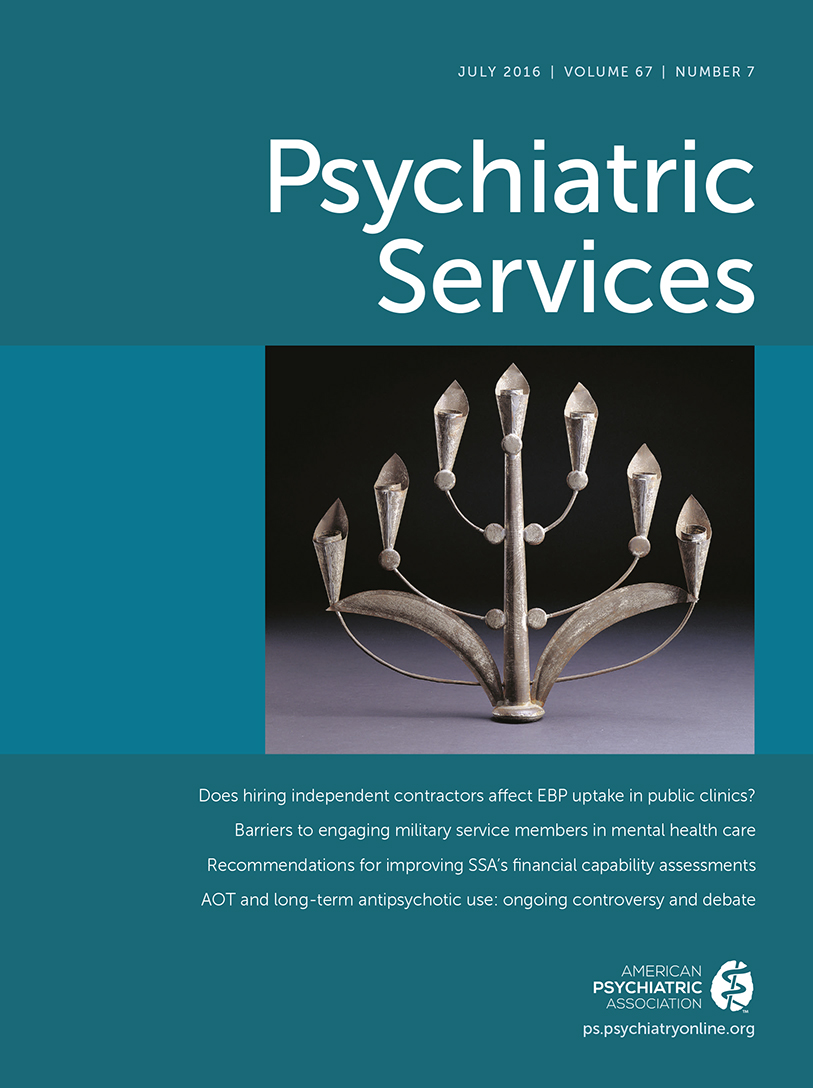Trends in Health Care Utilization Among Adults With Serious Psychological Distress: 2003–2014
Abstract
Objective:
The purpose of this study was to assess trends in health care utilization among adults with serious psychological distress (SPD) from 2003 to 2014 and compare utilization patterns between adults with and without SPD.
Methods:
The study sample came from the 2003–2014 National Health Interview Survey series. SPD was measured by the six-item Kessler Psychological Distress Scale. Logistic regressions were performed to test the overall trends in health care utilization stratified by SPD status. Postestimation methods were used to obtain predicted changes in the percentages of adults with and without SPD who utilized health care services.
Results:
Adjusted analyses showed that from 2003 through 2014, the percentage of adults with four or more outpatient office visits per year decreased by .4% each year among adults without SPD and by .5% among adults with SPD. The percentage of adults with a hospital admission each year decreased by .1% among adults without SPD and .3% among adults with SPD. The percentage of adults with two or more emergency department (ED) visits each year decreased by .1% among adults without SPD and increased significantly by .2% among adults with SPD. Supplementary analyses suggested that the increasing trends in ED utilization among adults with SPD had leveled off since 2011.
Conclusions:
Adults with SPD utilized outpatient, inpatient, and emergency care at higher rates compared with adults without SPD. In particular, utilization of ED visits increased significantly over the past decade among adults with SPD, indicating a widening gap in the adequacy of services for this population.



